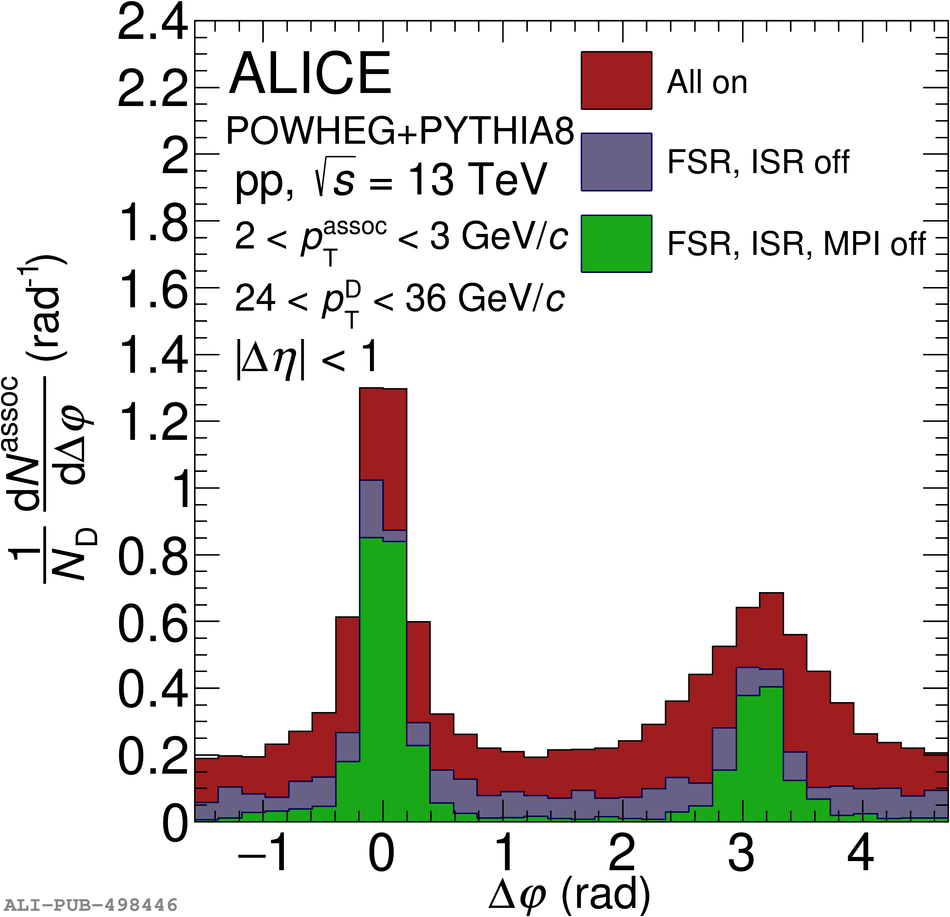Beauty-jet production in small systems with the ALICE experiment
The production of heavy-flavor jets in proton-proton collisions serves as a fundamental test of perturbative QCD, while p-Pb (Pb-Pb) measurements provide information about the effects of the cold (and hot) nuclear matter. Our group plays a key role in several experimental measurements within the ALICE Heavy Flavor Jets and Correlations physics analysis group [1]. One such analysis is the measurement of the b-jet production at √s=5 TeV in pp and p-Pb collisions. The final results on the production cross-section and b-jet fractions in both systems, as well as the nuclear modification factor in p-Pb collisions (Fig. 1), have been submitted for publication [2]. With the excellent particle tracking capabilities of ALICE detector, these results extend to unprecedentedly low momenta (10 GeV/c) and pave the way to the understanding of flavor-dependent jet fragmentation as well as nuclear modification.

Correlation of D mesons with charged hadrons
Correlation measurements of D mesons with charged hadrons reveal the heavy-flavor jet structure at intermediate momenta. Simulations on D-h correlations in pp collisions at √s=5 TeV, aimed at the detailed understanding of partonic and hadronic contributions to heavy-flavor jet production were evaluated [3]. Our group is also a main contributor to the D-h correlation measurements in pp collisions at √s=13 TeV by the ALICE experiment (Fig. 2), and to the preparation of the corresponding publication [4]. Furthermore, our group participate in the peak shape analysis of heavy-flavor electron to hadron correlations in √s=5 TeV pp and p-Pb collisions. This work will become part of a later ALICE publication.

High-momentum hadron production in the ALICE experiment
Light-flavor particle spectra are the benchmark test for perturbative QCD calculations beyond leading order, as well as for fragmentation models (Fig. 3). They also provide the baseline for potential nuclear modification in larger collision systems as well as small systems with high final-state multiplicities. The production of light-flavor mesons and baryons was measured in inelastic proton-proton (pp) collisions at a center-of-mass energy of √s=7 TeV and √s=13 TeV at midrapidity as a function of transverse momentum, using the ALICE detector at the CERN LHC. A hardening of the spectra at high pT with increasing collision energy was observed. Our group played a leading role in these measurements [5]. This work is being continued with differential data analysis in ALICE pp and pPb collisions, by characterizing the underlying event region as a function of the transverse event activity classifier.

[1] Vértesi R (ALICE), PoS LHCP2020, 143 (2020).
[2] ALICE Collaboration, JHEP 01 (2022) 178.
[3] Frajna E, Vértesi R, Particles 4 (2021) 4, 512.
[4] ALICE Collaboration, Eur.Phys.J.C 82 (2022) 4, 335.
[5] ALICE Collaboration, Eur.Phys.J.C 81 (2021) 3, 256.
